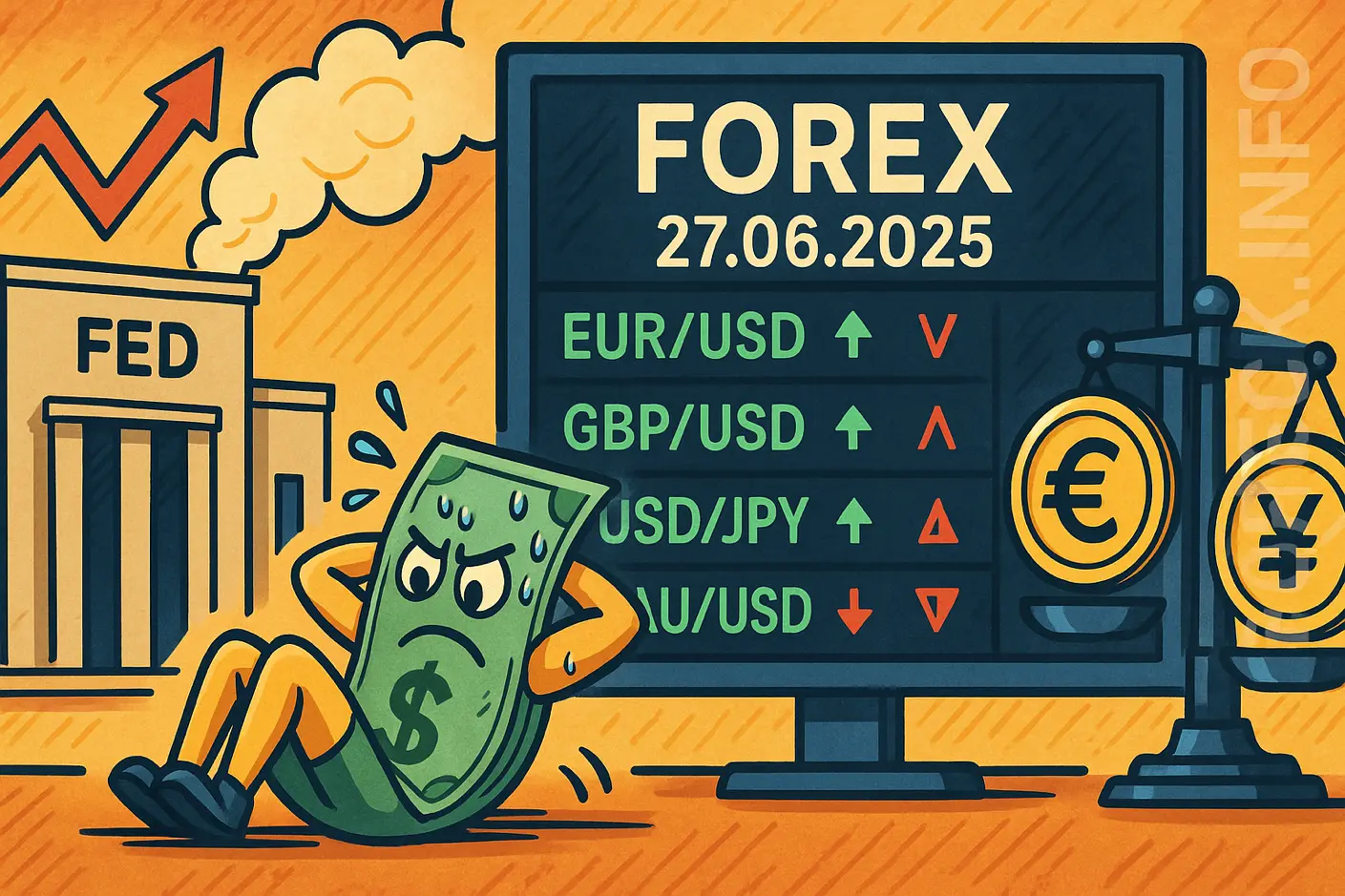The US dollar weakened against the euro and pound sterling, while showing mixed dynamics versus the yen. Fresh data released today on the Personal Consumption Expenditures (PCE) Price Index for May showed monthly inflation holding steady at 0.1%, but the annual figure increased from 2.2% to 2.3%. The core PCE rose from 0.1% to 0.2% month-on-month and from 2.6% to 2.7% year-on-year, both above consensus estimates. This stronger-than-expected inflation reading reinforces the likelihood that the Federal Reserve will maintain higher interest rates for longer. Most Fed officials remain cautious about future monetary moves. Boston Fed President Susan Collins signaled that rate adjustments are unlikely before year-end, while Minneapolis Fed President Neel Kashkari highlighted lingering uncertainties about the delayed effects of tariffs on the US economy.
Meanwhile, US and Chinese officials updated trade deal terms after negotiations in Geneva. President Donald Trump confirmed that Beijing will review and approve select US goods under Chinese export controls, while the White House will lift some restrictions on Chinese imports. However, a full list of affected products has not been released.
Forex Eurozone: Euro Strengthens Across Major Pairs
The euro gained against the dollar, yen, and pound. Investors digested mixed data from the euro area: the June industrial sentiment index worsened to -12.0 points from -10.4, missing forecasts for an improvement to -9.9, while the services sector expectations index jumped from 1.8% to 2.9%, well above expectations. Persistent weakness in manufacturing is being offset by resilience in services. ECB Vice President Luis de Guindos commented that inflation is decelerating steadily toward the 2% target, allowing for possible further monetary easing. Market participants expect at least one more ECB rate cut by year-end.
United Kingdom: Pound Holds Gains on Robust Outlook
Sterling weakened versus the euro but appreciated against both the US dollar and yen. Traders await Monday’s Q1 GDP data, with forecasts calling for quarterly growth to rise from 0.1% to 0.7% but for annual growth to slow from 1.5% to 1.3%. If realized, these results would reduce the probability of a Bank of England rate cut and reinforce recent comments from Governor Andrew Bailey, who noted that the negative impact of trade uncertainty may be less severe than previously thought.
Japan: Yen Shows Mixed Performance on Inflation Data
The yen weakened against the euro and pound but remained mixed against the dollar. The latest Tokyo CPI data revealed that headline inflation slowed to 3.1% from 3.4% year-on-year in June, while the core rate also fell from 3.6% to 3.1% (consensus: 3.5% and 3.3%, respectively). Although the pace of inflation is easing faster than expected, it remains well above the Bank of Japan’s 2% target. Analysts believe this pullback is temporary, mostly due to lower utility bills, while food prices remain elevated. This could fuel a renewed uptrend in inflation and increase the probability of further BoJ tightening later this year.
Australia: Aussie Dollar Under Pressure Ahead of RBA Decision
The Australian dollar weakened against the US dollar, euro, yen, and pound, as traders positioned ahead of the July 8 Reserve Bank of Australia meeting. The consensus expects a 25-basis-point rate cut, with a further reduction likely in August, taking the key rate to 3.35%. Policymakers are then expected to pause and assess the impact before resuming a dovish policy cycle at the end of the year or early 2026.
Oil: Prices Steady in Narrow Range
Crude oil prices remained range-bound as the Israel-Iran ceasefire reduced fears of disruptions to Middle East supply routes. Attention now turns to the Federal Reserve’s next moves, which remain uncertain amid White House pressure. Most FOMC officials are still cautious on rate cuts, but a few have hinted at the possibility of lower borrowing costs soon. Next week’s OPEC+ summit could result in a new output hike, weighing on oil prices and adding volatility to the forex market.

